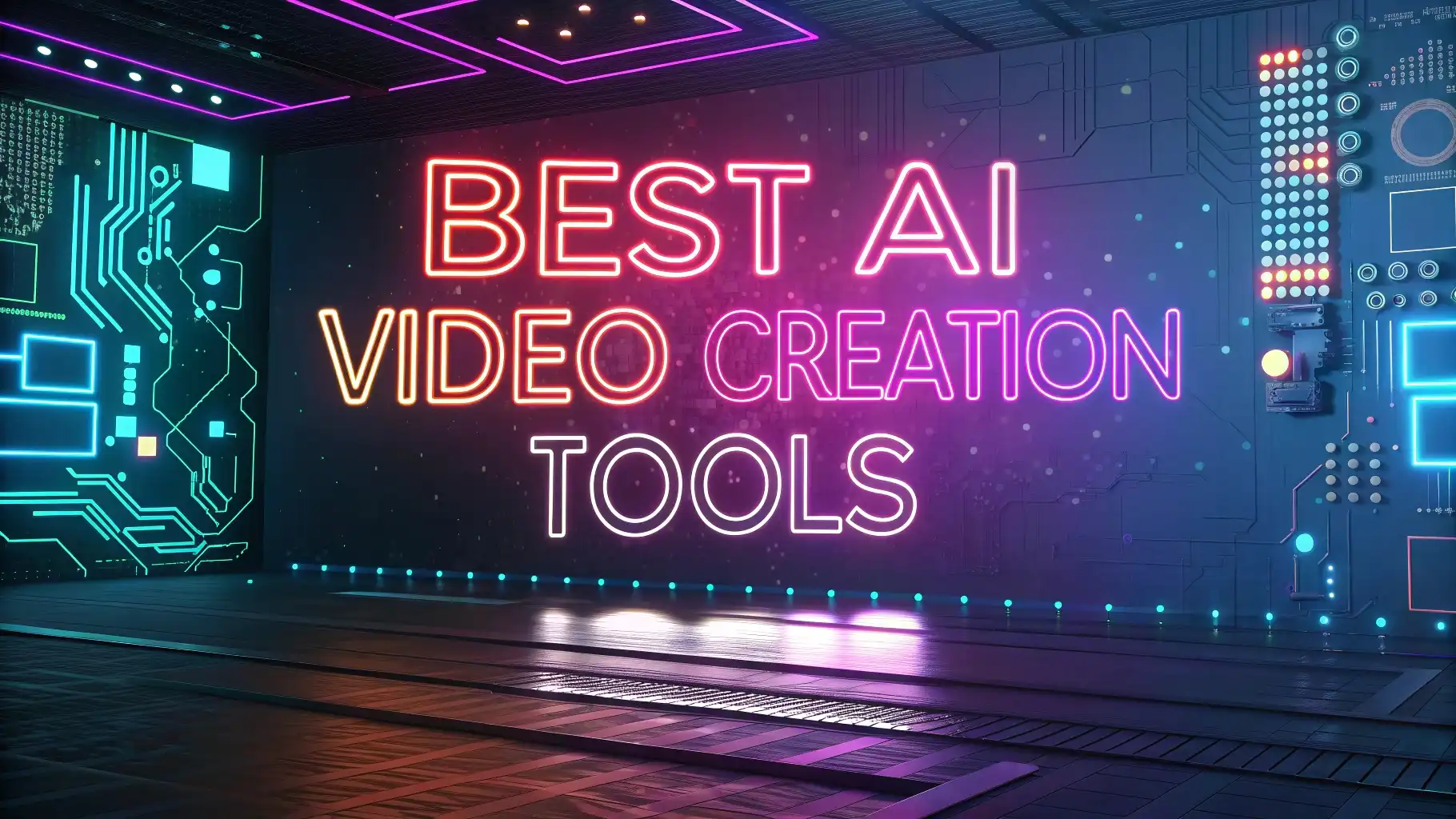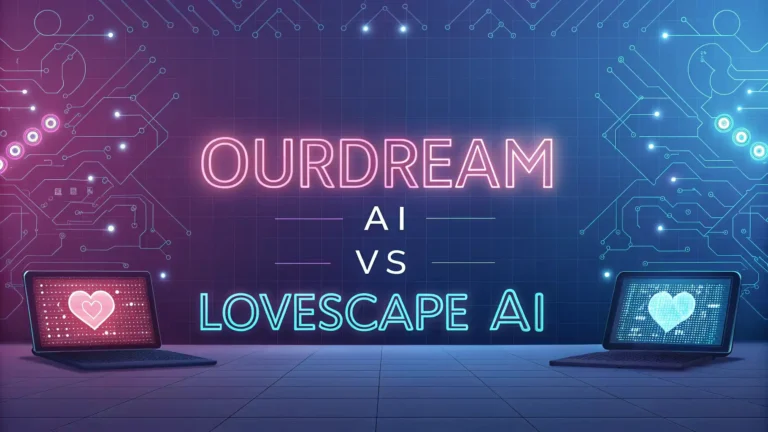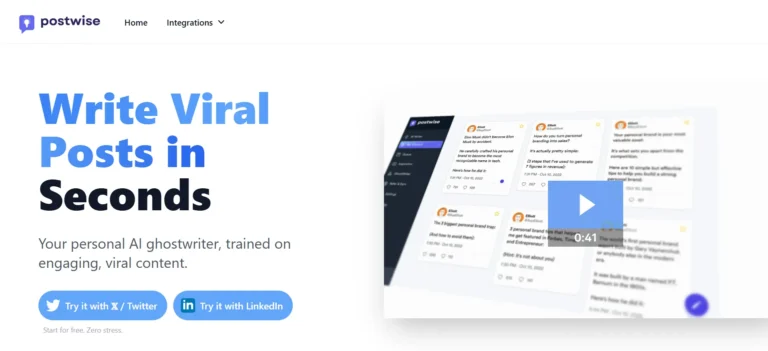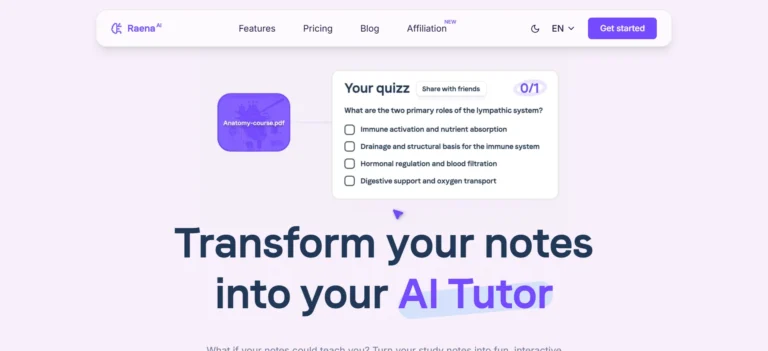Top 3 AI Video Creation Tools 2025: Unique Content Strategy
The digital landscape is experiencing a revolutionary transformation as artificial intelligence reshapes how we create video content. With the AI video generator market projected to reach $2.56 billion by 2032, growing at an impressive 20% annual rate, businesses and content creators are discovering powerful new ways to produce professional videos without traditional barriers.
This rapid growth reflects a fundamental shift in content creation methodologies. 90% of online content is expected to be AI-generated by 2025, making it essential for creators, marketers, and businesses to understand and leverage these cutting-edge tools.
The traditional video production process that once required extensive equipment, technical expertise, and significant time investment is being replaced by intuitive AI-powered platforms that democratize professional video creation.
Key Takeaways
- Market Explosion: The AI video creation industry is experiencing unprecedented growth, with market size expanding from $614.8 million in 2024 to over $2.5 billion projected by 2032
- Accessibility Revolution: Modern AI video tools eliminate technical barriers, allowing anyone to create professional-quality videos using simple text prompts and intuitive interfaces
- Cost Efficiency: These platforms significantly reduce production costs compared to traditional video creation methods, making professional content accessible to small businesses and individual creators
- Speed Advantage: AI video generators can produce complete videos in minutes rather than hours or days, enabling rapid content creation for social media and marketing campaigns
- Quality Standards: Latest AI models deliver broadcast-quality output with realistic avatars, natural voice synthesis, and professional editing capabilities that rival traditional production methods
- Business Impact: Companies using AI video tools report faster time-to-market, reduced production budgets, and increased content output volume while maintaining professional standards
Top 3 AI Video Creation Tools for 2025
Syllaby AI: The Content Creator’s Ultimate Companion
Syllaby AI stands out as a comprehensive video creation ecosystem designed specifically for content creators and digital marketers. This platform combines advanced AI capabilities with user-friendly interfaces to deliver exceptional results across various video formats.
The platform’s question-based content discovery system helps creators identify trending topics in their industry by analyzing real questions people ask online. This approach ensures content relevance and audience engagement, making Syllaby AI particularly valuable for businesses focused on educational or informational content.
Script generation capabilities within Syllaby AI produce engaging narratives optimized for different video lengths and styles. The system analyzes successful content patterns and incorporates proven storytelling techniques to maximize viewer retention and engagement rates.
The voice cloning feature allows users to create consistent audio branding across their video library. This technology captures voice characteristics and speaking patterns, enabling creators to maintain personality consistency while scaling content production significantly.
Faceless video creation represents a unique strength of Syllaby AI, allowing creators to produce professional content without appearing on camera. This feature particularly appeals to businesses creating educational content, product demonstrations, or informational videos where the focus should remain on the message rather than the presenter.
The platform’s integrated editing suite provides professional-level editing capabilities without requiring technical expertise. Users can trim footage, add effects, incorporate background music, and apply transitions using intuitive drag and drop interfaces.
Social media optimization features ensure content performs well across different platforms. Syllaby AI automatically adjusts video dimensions, duration, and formatting to meet platform-specific requirements, maximizing reach and engagement potential.
Synthesia: Professional AI Avatar Platform
Synthesia has established itself as the industry leader in AI avatar video creation, serving over 47% of Fortune 100 companies with its sophisticated platform. The system offers remarkable realism in avatar creation and voice synthesis, making it ideal for corporate communications, training materials, and marketing content.
The platform supports over 140 languages, making it invaluable for global organizations requiring multilingual content. Professional avatar quality meets broadcast standards, with natural facial expressions, realistic lip synchronization, and authentic body language that creates genuine connections with viewers.
Custom avatar creation allows organizations to develop branded presenters that align with their visual identity and communication style. These avatars can be used consistently across multiple videos, creating familiarity and trust with audiences while maintaining professional presentation standards.
The template library includes professionally designed layouts for various business applications, from product launches and training sessions to customer onboarding and internal communications. These templates incorporate best practices for visual design and information presentation.
Collaboration features support team-based video production workflows, with approval processes, version control, and brand guideline enforcement. These capabilities make Synthesia particularly suitable for large organizations with complex content creation requirements.
Integration capabilities allow Synthesia to connect with existing business systems, including learning management platforms, customer relationship management tools, and content management systems. This connectivity streamlines video production workflows and ensures consistent brand messaging across all channels.
InVideo AI: Versatile Content Generation Platform
InVideo AI offers exceptional versatility in AI-powered video creation, combining advanced generation capabilities with comprehensive editing tools. The platform excels at transforming text inputs into polished videos suitable for various applications, from social media content to professional presentations.
The text-to-video conversion system analyzes input content and automatically selects appropriate visuals, background music, and transitions to create cohesive narratives. This automated approach significantly reduces production time while maintaining professional quality standards.
Stock media integration provides access to millions of high-quality images, video clips, and audio tracks, eliminating the need for separate media licensing. The AI system intelligently matches media elements to content themes, ensuring visual consistency and narrative flow.
Template customization allows users to modify pre-designed layouts to match their brand identity and messaging requirements. The platform offers extensive customization options without requiring advanced design skills, making professional video creation accessible to users with varying technical backgrounds.
Multi-format export capabilities ensure content compatibility across different platforms and devices. InVideo AI automatically optimizes videos for specific social media platforms, websites, or presentation formats, maintaining quality while meeting technical requirements.
Performance analytics help users understand video engagement metrics and optimize future content based on audience response patterns. These insights enable data-driven improvements to video content strategies and messaging effectiveness.
Choosing the Right AI Video Tool for Your Needs
Selection criteria for AI video creation tools should align with specific use cases, budget constraints, and technical requirements. Content creators focused on social media might prioritize quick turnaround times and platform optimization features, while businesses requiring professional presentations might emphasize avatar quality and collaboration capabilities.
Budget considerations vary significantly across different tools and usage levels. Most platforms offer tiered pricing models with free trials or basic plans that allow users to evaluate features before committing to paid subscriptions. Feature comparison should focus on essential capabilities rather than comprehensive feature lists.
Integration requirements become important for businesses planning to incorporate AI video creation into existing workflows. API availability, third-party integrations, and export format compatibility can significantly impact implementation success and long-term usability.
Technical Considerations and Best Practices
Hardware requirements for AI video creation tools are generally minimal, as most processing occurs on cloud-based servers. However, internet connectivity quality directly impacts user experience, particularly during video rendering and export processes.
Content planning remains crucial despite AI automation capabilities. Clear objectives, target audience definition, and message structure significantly impact final video quality and effectiveness. AI tools enhance production efficiency but cannot replace strategic thinking and creative planning.
Brand consistency requires careful attention to visual elements, messaging tone, and presentation style across multiple videos. Style guides and template customization help maintain professional standards while leveraging AI automation capabilities.
Understanding the AI Video Creation Revolution
The artificial intelligence video generation landscape has evolved dramatically in recent years. These sophisticated platforms use machine learning algorithms to transform text descriptions into compelling visual content, complete with realistic avatars, professional voiceovers, and polished editing.
Traditional video production typically requires substantial investments in equipment, software licenses, and skilled personnel. A single professional video might take weeks to produce, involving scriptwriting, filming, editing, and post-production phases. AI video generators compress this timeline into minutes while maintaining professional quality standards.
The technology behind these tools combines natural language processing, computer vision, and generative AI models to understand user inputs and create corresponding visual content. Users can describe their vision in plain language, select from various templates and styles, and receive professionally edited videos ready for distribution across multiple platforms.
Market Growth and Industry Trends
Current market research indicates explosive growth in AI video creation adoption. The sector is experiencing a compound annual growth rate of 20-35%, driven by increasing demand for video content across social media platforms, marketing campaigns, and educational resources.
Enterprise adoption is particularly strong, with companies recognizing the efficiency gains and cost savings offered by AI video tools. Small businesses and individual creators are equally enthusiastic, as these platforms level the playing field by providing access to professional-quality video production capabilities previously available only to large organizations with substantial budgets.
The democratization of video creation represents a fundamental shift in content marketing strategies. Businesses can now produce regular video content for social media, training materials, product demonstrations, and customer communications without maintaining in-house video production teams or outsourcing to expensive agencies.
Essential Features of Modern AI Video Tools
Contemporary AI video creation platforms offer comprehensive feature sets designed to meet diverse user needs. Automated script generation helps users develop compelling narratives from basic input parameters, while voice cloning technology creates consistent audio branding across multiple videos.
Template libraries provide starting points for various video types, including social media posts, marketing presentations, educational content, and product demonstrations. These templates incorporate best practices for platform-specific requirements, ensuring optimal performance across different channels.
Multi-language support enables global content distribution, with many platforms offering translation capabilities and culturally appropriate visual elements. Collaboration features allow teams to work together on video projects, streamlining approval processes and maintaining brand consistency.
Future Trends in AI Video Creation
Emerging technologies continue to expand AI video creation capabilities. Real-time generation is becoming possible, allowing users to create and modify videos during live presentations or interactive sessions. Advanced personalization features will enable dynamic content adaptation based on viewer preferences and behavior patterns.
Integration with other AI tools is creating comprehensive content creation ecosystems. Combined platforms offering writing assistance, image generation, and video creation provide end-to-end solutions for digital marketing and content production needs.
Quality improvements in AI-generated content continue advancing rapidly. Higher resolution outputs, more realistic avatar movements, and improved voice synthesis are making AI videos increasingly indistinguishable from traditionally produced content.
Measuring Success with AI Video Tools
Performance metrics for AI-generated video content should focus on engagement rates, view duration, and conversion goals rather than production costs or time savings alone. A/B testing different video styles, lengths, and messaging approaches helps optimize content effectiveness.
Return on investment calculations should consider both direct cost savings and improved content output volume. Businesses often find that AI video tools enable more frequent content publication, leading to increased audience engagement and brand visibility.
Quality assessment involves both technical metrics and audience feedback. Professional appearance, message clarity, and brand alignment remain critical success factors regardless of the production method used.
Security and Privacy Considerations
Data protection becomes important when using cloud-based AI video creation platforms. Privacy policies, data retention practices, and content ownership rights require careful review, particularly for businesses handling sensitive information or proprietary content.
Content authenticity and disclosure requirements may apply when using AI-generated videos for marketing or commercial purposes. Transparency about AI usage helps maintain audience trust and complies with emerging regulations regarding synthetic media.
Backup and archival strategies ensure content availability and version control. Export capabilities and format compatibility enable content migration between platforms if needed, protecting investments in video content libraries.
Cost Analysis and ROI Calculation
Traditional video production costs typically include equipment rental, personnel fees, location expenses, and post-production services. Professional videos can cost thousands of dollars each, making regular content creation financially challenging for smaller organizations.
AI video creation platforms dramatically reduce these costs through subscription-based pricing models and automated production processes. Monthly subscriptions ranging from $15 to $120 provide access to professional-quality video creation capabilities without upfront capital investments.
Time savings represent another significant value proposition. Content creators can produce multiple videos daily using AI tools, compared to weeks required for traditional production methods. Opportunity costs of delayed content publication further emphasize the efficiency advantages of AI-powered creation.
Integration with Existing Workflows
Workflow integration requires careful planning to maximize AI video tool benefits while maintaining quality standards and approval processes. Content calendars, review procedures, and publication schedules can be adapted to accommodate faster production timelines.
Team training ensures effective platform utilization and consistent output quality. Best practices development and style guide creation help maintain brand standards across different team members and projects.
Quality control processes remain important despite AI automation. Review procedures, approval workflows, and brand compliance checks ensure professional standards while leveraging efficiency gains from AI-powered creation.
Frequently Asked Questions
What makes AI video creation tools different from traditional video editing software?
AI video creation tools generate content automatically from text descriptions, while traditional editing software requires users to manually assemble video elements. AI platforms can create complete videos including visuals, audio, and effects from simple prompts, significantly reducing production time and technical skill requirements.
How much can businesses save using AI video creation platforms?
Cost savings vary depending on current production methods and content volume requirements. Businesses typically save 60-80% on video production costs compared to hiring agencies or maintaining in-house production teams. Time savings often provide even greater value through faster content publication and increased output volume.
Are AI-generated videos suitable for professional business use?
Modern AI video platforms produce broadcast-quality content suitable for professional applications including marketing campaigns, training materials, and customer communications. Quality standards continue improving rapidly, with many AI-generated videos being indistinguishable from traditionally produced content.
What technical skills are required to use AI video creation tools?
Most AI video platforms are designed for users without technical video production experience. Basic computer skills and familiarity with web-based applications are typically sufficient. Advanced features may require some learning, but essential video creation capabilities remain accessible to beginners.
How do AI video tools handle different languages and international content?
Leading AI platforms support dozens of languages with native voice synthesis and cultural adaptation features. Automatic translation capabilities enable global content distribution, while localization features ensure cultural appropriateness for different markets.
What are the limitations of current AI video creation technology?
Current limitations include restrictions on video length, limited customization options for specific visual styles, and occasional inconsistencies in avatar movements or voice synthesis. Platform capabilities continue expanding rapidly, with many limitations being addressed through regular updates and improvements.

Leo Donovan is a passionate tech enthusiast and writer with a knack for making complex concepts accessible to all. With years of experience exploring the ever-evolving world of technology, Leo specializes in delivering practical advice, insightful AI tool reviews, and hands-on guides. When not diving into the latest gadgets or coding experiments, Leo enjoys sharing knowledge to empower others on their tech journey through How to Tech Info.







